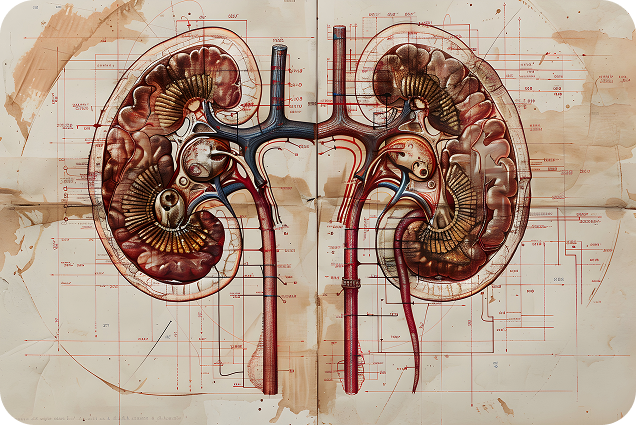Services
Adrenal Disease

Adrenal Glands
The adrenal glands are two small, triangular organs located above each kidney. Though small in size, they play a major role in regulating metabolism, blood pressure, stress response, and immune function. Each gland has two parts: the outer cortex and the inner medulla, which produce essential hormones like cortisol, aldosterone, adrenaline, and sex steroids.
When Is Adrenal Surgery Needed?
Adrenal surgery is recommended when one or both glands develop tumors or produce abnormal hormone levels. Common conditions include adrenal adenoma, Cushing’s syndrome (excess cortisol), Conn’s syndrome (excess aldosterone), pheochromocytoma (excess adrenaline), and adrenocortical carcinoma (a rare cancer). These disorders can cause symptoms such as high blood pressure, weight gain, fatigue, mood changes, and irregular heart rate.
Adrenal Surgery Procedure
Adrenalectomy (removal of the adrenal gland) is performed under general anesthesia. Depending on the size and nature of the tumor, the surgery may be laparoscopic (minimally invasive) or open. The patient is positioned on their side or back, and small incisions are made in the abdomen or flank. The affected gland is carefully removed, and the tissue is sent for immediate analysis. The incision is then closed with absorbable sutures or staples.
During the surgery, your family can wait in the family waiting area. They will be kept updated by the patient representative and operating room staff. The surgeon will speak with them after surgery has been completed.
After surgery
After surgery, patients are monitored for blood pressure, electrolyte levels, and hormone balance. A liquid diet is usually given on the evening of surgery, followed by regular meals the next day. Pain is managed with oral medication, and most patients are discharged within two to three days. If both adrenal glands are removed, hormone replacement therapy may be required..
How will I feel after surgery?
Most patients feel tired and sore for a few days. Muscle stiffness in the back and shoulders is common due to surgical positioning. A sore throat may occur from anesthesia tubes, which can be relieved with lozenges or sprays. Swelling in the neck or abdomen may be present but usually resolves within a week. If calcium levels drop, patients may experience tingling or numbness, which is managed with supplements. These effects are typically temporary, and normal function returns in most cases within weeks.
Recovering at Home
Recovery at home is generally smooth. Patients are advised to rest for 3–5 days and avoid strenuous activity for about two weeks. The incision site is covered with steri-strips and heals well with minimal scarring. Sunscreen with SPF 30 should be applied to the scar for up to a year to prevent darkening. Follow-up appointments include blood tests and imaging to ensure proper healing and hormone regulation.